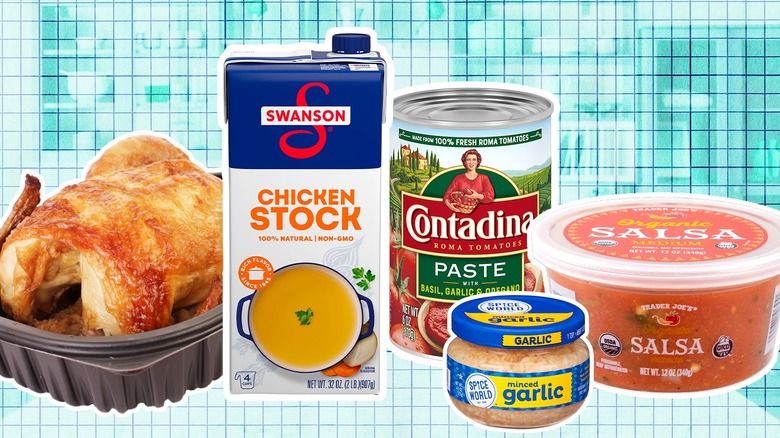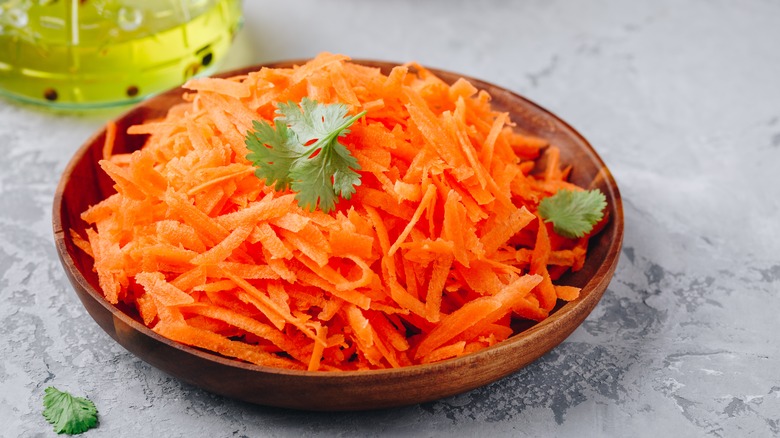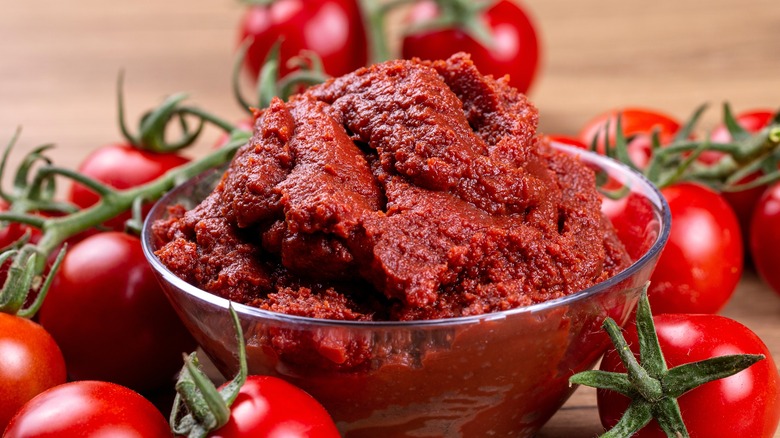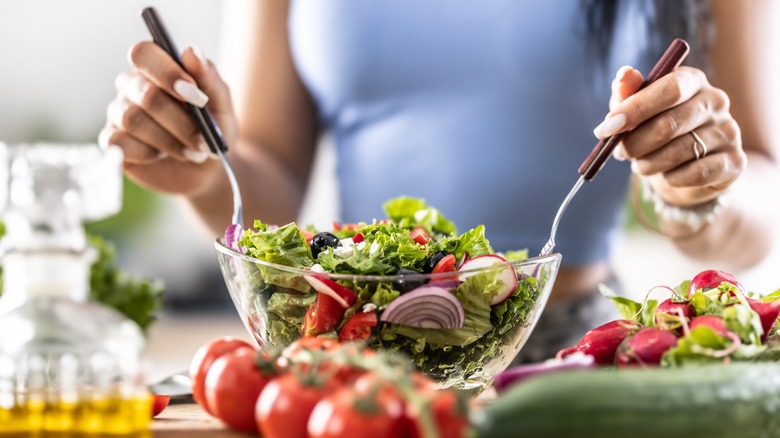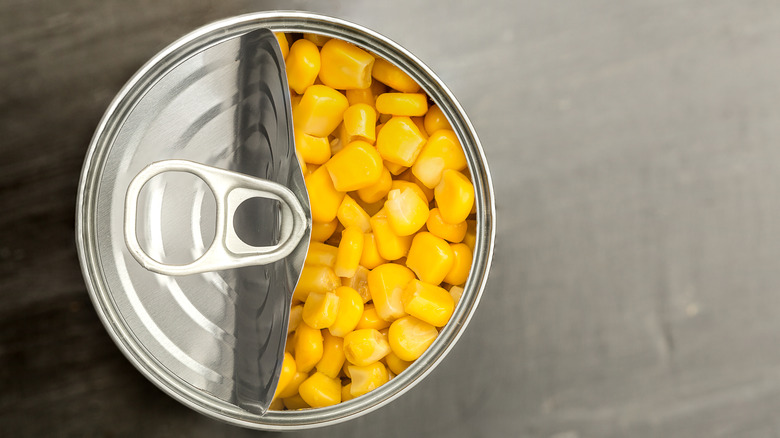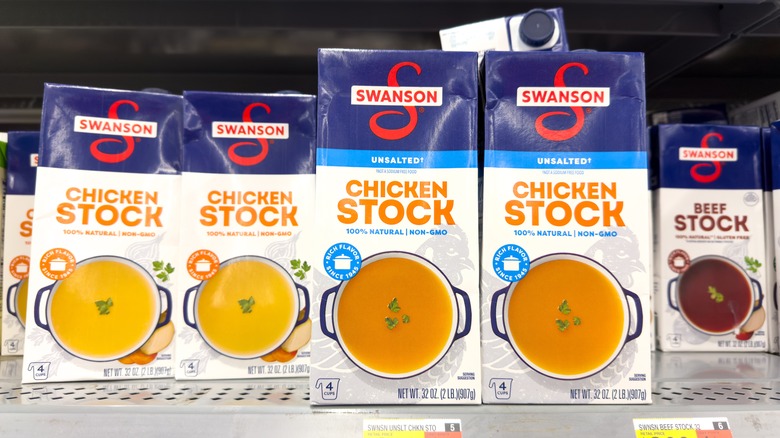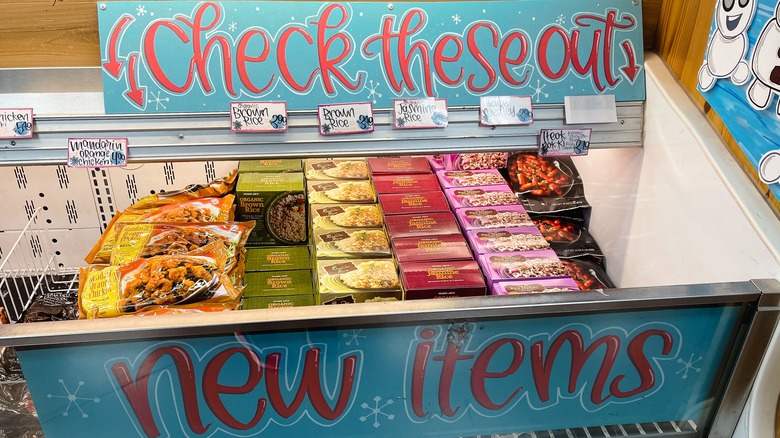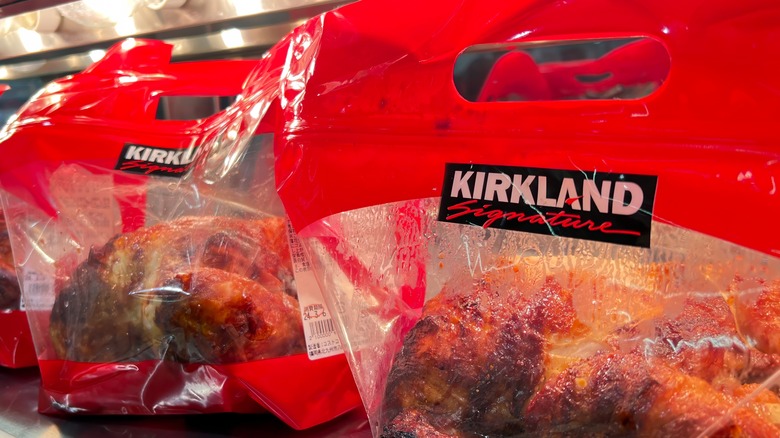Tasting Table Staff's 7 Favorite Store-Bought Dinner Shortcuts
As many meals (and snack times) as there are in a day, dinner demands our attention like no other. Long before bellies begin rumbling, our thoughts are on it: "What I am going to eat, and do I have the ingredients needed?" For some, the question even comes down to wondering, "Where will I find the time to make dinner?"
There is always a pull when it comes to the day's final meal. It stretches us between our desire to be creative, the need to nourish ourselves, and our realistic capacity to do any of that at all. Whether you're short on hours or looking to take the effort out of some menial kitchen tasks, having a store-bought dinner shortcut is invaluable to crafty home cooks and caretakers alike.
Thinking about cooking is part of the Tasting Table writer's job, and planning how to prepare dinner is part of our passion. So, the dedicated contributors who feed this site came together to share some of their favorite hacks for making dinner easier. Between pantry staples to keep on hand and techniques to take the load off your shoulders, these dinner shortcuts should make your evening meal much easier.
Buy pre-cut veggies in bulk — Jaimie Mackey
There are three bagged vegetables that we always have in our crisper drawer to help us get dinner on the table faster: shredded carrots, shredded cabbage, and broccoli florets. Of course, you can use the carrots and cabbage to make coleslaw, but that's not all they're good for. I love to add shredded carrots to salads for some sweetness or pile shredded cabbage on a sandwich instead of lettuce. And they're both a must when it's stir-fry night in my house. Julienne an onion and a bell pepper, add a few handfuls of carrots and cabbage, and you've got a veggie-forward dinner with minimal chopping.
Speaking of chopping, a bag of broccoli florets (in particular, one from Costco) is a game-changer. It looks like way too much broccoli if you're not feeding an army, but grab it anyway and use a trick I picked up from my days as a restaurant owner: After you've opened the bag, toss in a paper towel to absorb any condensation. Change the towel each time you use some broccoli to help manage the moisture and keep your vegetables fresh longer. You'll be moments away from an easy roasted side dish.
Canned tomato paste is essential for all sorts of quick meals — Sara Klimek
Canned tomato paste is essential for any household. While you can buy it in a tube for easy squeezing, I tend to opt for a canned variety since it's often cheaper. But then comes the question: What do you do with the leftover tomato paste once you grab the amount that you need for your recipe?
Once I open a can of tomato paste, I grab as much as I need and then dollop the remaining components onto sheets of plastic wrap. Then, I give each a quick twist and pop it into the freezer. When I need tomato paste the next time, whether to enhance a homemade pasta sauce or to add a subtly sweet, umami flavor to a salad dressing, I reach for a pouch from my freezer.
If you try freezing tomato paste at home, you could always measure it out into tablespoons or use an ice cube tray for easy portioning. But the plastic wrap is super easy to peel off, and you can toss the frozen blob into any recipe.
Use condiments instead of prepared salad dressing — Melissa Gaman
I love salad, but I hate making a salad dressing recipe. Sure, it's not hard, but that one extra step gets me every time. The logical shortcut is to use prepared salad dressing. But, honestly, between the inevitable too-sweet, processed taste and syrupy texture, I'd rather eat plain lettuce. Luckily, I found another way. I started using condiments, sauces, and dips to dress my salad, and they have never been so delicious.
For a creamy dressing, a scoop of hummus, tzatziki, or garlicky toum sauce with a splash of vinegar delivers a one-two punch of acidity and richness. If an herby dressing is in order, chimichurri, pesto, or spicy zhug deliver fresh, concentrated flavor and eliminate the need to buy bunches of different herbs. For a hit of spice, chili crunch, chopped kimchi, or Buffalo dip (I'm partial to Trader Joe's vegan version) will have your taste buds tingling.
I start by tossing chopped, juicy vegetables like tomatoes and cucumbers with a big pinch of salt to help them release their liquid. Then I add greens, veggies, or protein (leave the crunchies until the very end) and a couple of dollops of my dip or sauce of choice. A few good tosses will combine it all, and the vegetable juices will thin out the sauce into a perfect dressing. A splash of vinegar, citrus, or oil, depending on the condiment you choose, and you are done. Maximum flavor with minimal effort.
Use canned corn instead of fresh — Sarah Bisacca
When it comes to adding a touch of summer freshness to salads and bowls, there's nothing quite like fresh sweet corn. Like little bites of sunshine, sweet corn kernels are best enjoyed straight off the cob while they're in season from May through September. Even when that farm-fresh corn is readily available on grocery store shelves, culling the kernels from the cob can be a hassle, especially on a time-crunched weeknight. Skip the mess and reach for canned corn instead.
Canned at the peak of freshness, canned corn retains its signature sweetness and crunch with the added benefit of easy preparation. When it's time to toss together a quick dinner, simply pop the top, drain the kernels, and throw those sweet, earthy bits of goodness into a skillet to heat through or straight into a pot of chili or soup for a little extra bite. Need a quick and easy side dish? Make an esquites-style Mexican corn salad by tossing corn kernels with mayo, lime juice, Tajín, and cilantro. Top with crumbled cojita cheese for an extra authentic touch.
Chicken stock for when you need a kick of flavor — Carmen Varner
Store-bought chicken stock is my sneaky way of adding flavor to almost anything without a lot of extra effort. Beef or vegetable stock or broth is excellent, too. I usually buy it in bulk from Costco. While it can be easy to make at home, sometimes I don't want to store a bunch of scraps in my already stuffed freezer or pay to keep something simmering on the stove for hours at a time. I pour the stock in anything, such has using half water and half chicken stock to cook quinoa or pouring a little bit in a pan to steam frozen green beans.
When roasting chicken and vegetables, I add a bit into the baking dish to keep the chicken moist without burning or sticking to the pan. I also use it as the base of whatever soup I'm making — in other words, I always have a carton of chicken stock open in my fridge. It's quick, easy to use, and relatively affordable. When I've made chicken stock, I've used up a good portion but ultimately thrown some away because I couldn't finish it in time before it started to smell funky. I like that Costco's bulk offering has multiple cartons, so I can use one at a time without them all going bad. It's a fast way to make dinner taste that much better.
Buy frozen microwaveable rice — Sarah Bisacca
Rice may be a budgeter's best friend, but it's not generally a time saver. Stovetop rice can take upwards of 45 minutes to cook, which makes it a bit of a pain to whip up on a weeknight whim. Luckily, there's a store-bought shortcut for that.
Head for the frozen aisle of your neighborhood Trader Joe's and grab a box of frozen rice. Available in jasmine, brown, organic brown, and even mixed medley varieties, these pre-cooked packs of rice are the stuff of last-minute meal dreams. Just pop a bag in the microwave for about three minutes, and voila! Hot and ready rice that's perfect for padding leftovers or pairing with other store-bought goodies.
Have a hankering for fried rice but don't want to order takeout? Simply microwave your preferred rice, add butter to a skillet over medium-high heat, and toss the rice into the pan. Make a hole in the middle of the rice and crack an egg right in the center. Sprinkle the whole thing with soy sauce and black pepper and scramble. Be sure to spread the rice into an even layer so you can get those crispy edges.
Use rotisserie chicken for just about anything — Matt Turner
The rotisserie chicken — available at just about every grocery store — is one of my favorite items to pick up each time I go shopping. It's tremendously versatile, it tastes great (which might surprise those who have yet to dip their toes into the world of store-bought rotisserie chicken), and, best of all, it's a huge time-saver. With the alternate being roasting a chicken, which can take two to three hours, prep and cook time included, a prepackaged rotisserie chicken gets you 95% of the way to your meal. Some of my favorite uses for rotisserie chicken include chicken salad, chicken pot pie, chicken quesadillas, Buffalo chicken dip, and chicken noodle soup. Chicken salad and chicken noodle soup are probably my two favorite options, given that they can both be made in large batches that I can eat throughout the week. Plus, you can't really go wrong with either.
For the former, to the shredded rotisserie chicken, I will add a combination of Greek yogurt and mayo as the binder, plus, celery, red onion, and craisins. If you prefer the likes of carrots, almonds, green apples, or just about anything else, then use those. As for the chicken noodle soup, you can simply add the shredded rotisserie chicken to store-bought broth, carrots, celery, and noodles. If you have some more time (or just want to try chef-ing it up a bit), you can use the remainder of the carcass to make a homemade stock.
